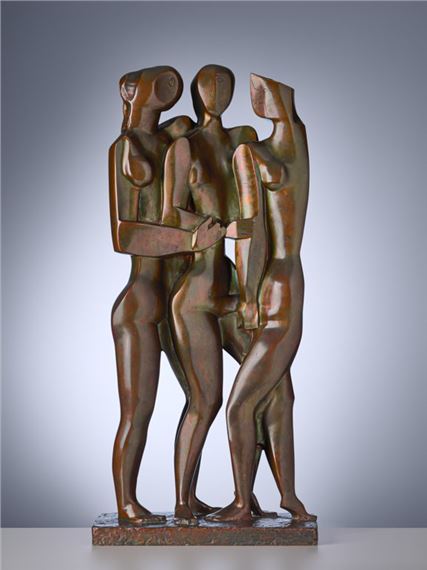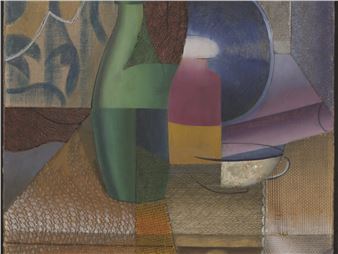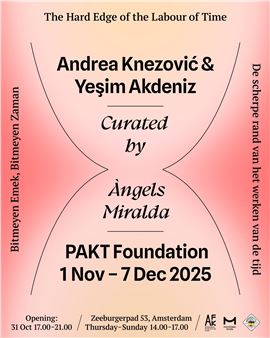Ossip Zadkine: Man, Myth and Metamorphosis
Ossip Zadkine was inspired by classical antiquity and nature. His work centres on myths and metamorphoses. Museum JAN in Amstelveen is devoting an exhibition next summer and autumn to this Russian-French artist, who enjoys international fame as the creator of the war memorial вҖңThe destroyed cityвҖқ in Rotterdam. Besides a select group of sculptures typical of Zadkine's view of art and artistry, a lesser-known part of his work will also be on display in Amstelveen. With his expressive gouaches, lithographs and etchings, Zadkine demonstrated an exceptional double talent.
The reason for the exhibition in Amstelveen is Zadkine's sculpture вҖңThe Three GracesвҖқ (1950) in Museum JAN's collection. The bronze sculpture with the mythological subject was bought in 1954 by industrialist and later museum founder Jan van der Togt. On 4 October next, it will be exactly 70 years since Van der Togt's new Tomado factory opened in Etten-Leur. An equally impressive relief by Ossip Zadkine adorned the entrance to the impressive building by architect Hugh Maaskant. Van der Togt's love for Zadkine's work marks the beginning of his private collection and is at the foundation of the museum.
The exhibition 'Ossip Zadkine. Man, Myth & Metamorphosis' features sculptures, paintings and prints from Dutch museum collections and private collections. They illustrate the artist's close relationship with the Netherlands, where he had many friends. After 1945, his work featured in almost every exhibition of modern sculpture in our country. Zadkine's significance for the development of Dutch sculpture in the 20th century was undeniable, but the reverse is also true. Partly due to his good Dutch contacts, Zadkine grew into one of the most influential artists of international modernism.

Recommended for you
Ossip Zadkine was inspired by classical antiquity and nature. His work centres on myths and metamorphoses. Museum JAN in Amstelveen is devoting an exhibition next summer and autumn to this Russian-French artist, who enjoys international fame as the creator of the war memorial вҖңThe destroyed cityвҖқ in Rotterdam. Besides a select group of sculptures typical of Zadkine's view of art and artistry, a lesser-known part of his work will also be on display in Amstelveen. With his expressive gouaches, lithographs and etchings, Zadkine demonstrated an exceptional double talent.
The reason for the exhibition in Amstelveen is Zadkine's sculpture вҖңThe Three GracesвҖқ (1950) in Museum JAN's collection. The bronze sculpture with the mythological subject was bought in 1954 by industrialist and later museum founder Jan van der Togt. On 4 October next, it will be exactly 70 years since Van der Togt's new Tomado factory opened in Etten-Leur. An equally impressive relief by Ossip Zadkine adorned the entrance to the impressive building by architect Hugh Maaskant. Van der Togt's love for Zadkine's work marks the beginning of his private collection and is at the foundation of the museum.
The exhibition 'Ossip Zadkine. Man, Myth & Metamorphosis' features sculptures, paintings and prints from Dutch museum collections and private collections. They illustrate the artist's close relationship with the Netherlands, where he had many friends. After 1945, his work featured in almost every exhibition of modern sculpture in our country. Zadkine's significance for the development of Dutch sculpture in the 20th century was undeniable, but the reverse is also true. Partly due to his good Dutch contacts, Zadkine grew into one of the most influential artists of international modernism.
Artists on show
Contact details


 ARTISTS
ARTISTS















